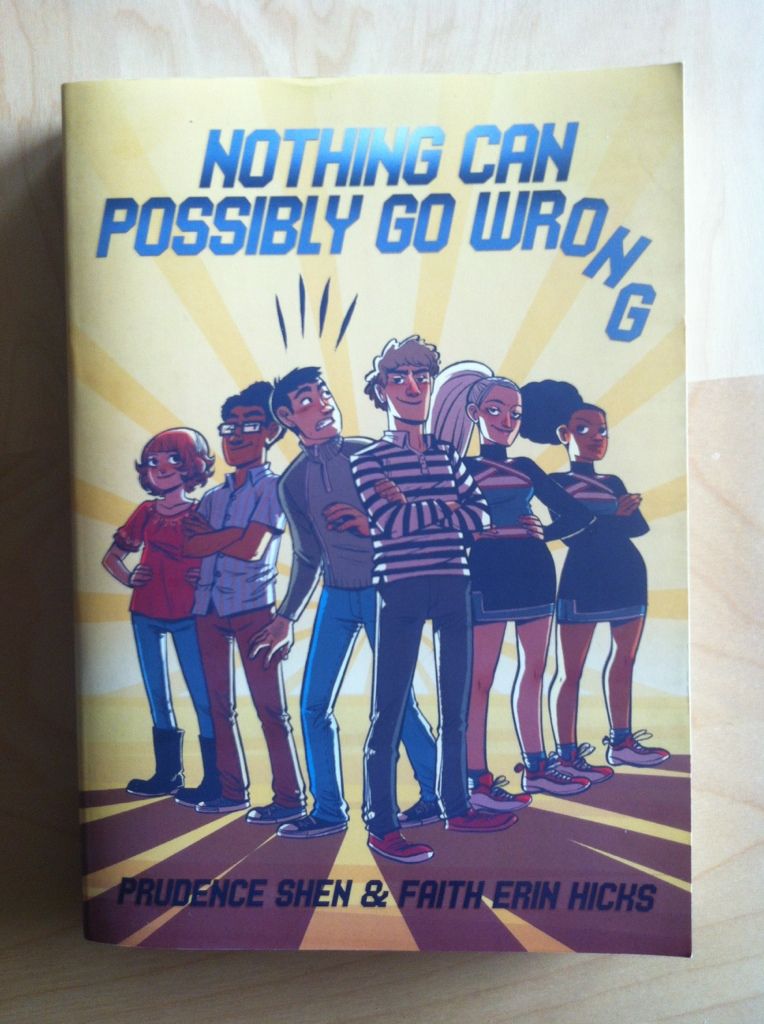A 250 (word or less) review of the Nothing Can Possibly Go
Wrong Graphic Novel
By Prudence Shen and Faith Erin Hicks, First Second Books

Nothing Can Possibly Go Wrong starts as a story about
highschool politics when Charlie, captain of the basketball team and affable
jock, gets caught in a dispute between Nate, the intense leader of the Robotics
club, and Holly, the ruthless head Cheerleader, as they declare war over
extracurricular funding. What follows is a game of dirty politics as Nate and
his long-suffering teammates attempt to win a school election against Charlie,
the unwilling pawn of the merciless cheerleaders. Can Nate and Charlie stay
friends despite a vicious election? Will the Robotics team make it to their
competition? Will the Cheerleaders get their new uniforms? Will all the family
and high school drama work itself out? Oh, and there are fighting robots
eventually. Nothing Can Possibly Go Wrong is a fun, accessible comic that I
think should appeal to just about everyone. The story is involving, the humour
is infectious, and Faith Erin Hicks artwork is, as always, fantastic and
endless fun. I am profoundly (profoundly!) over high school, and I still found
Nothing Can Possibly Go Wrong perfectly winning. And if Shen and Hicks can win me over, then I bet they can
win you over too. Fighting robots!